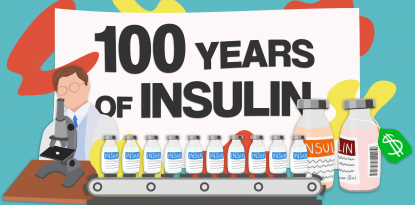关于哈佛糖尿病干细胞研究从ADA 2015的更新

Twitter摘要:@Harvard #Dibetes Stem Cell Lab Wows Crowd在#2015adada,计划生产完整的胰岛胰岛W / BETA +α细胞。仍然早期阶段。
有很多人对这个助理检察官感兴趣哈佛干细胞研究所的糖尿病研究,有以前所示生产成熟,产生来自人干细胞的胰岛素的β细胞的能力。这些β细胞可以有效治愈1型糖尿病在老鼠身上。(正常情况下,β细胞产生胰岛素,在胰腺中发现)。
虽然其他群体也在用于糖尿病的干细胞的疗法,但哈佛组织是独一无二的,因为它们能够生产成熟来自干细胞的β细胞。作为比较,著名的糖尿病干细胞研究小组天用的只能在体内植入后创建“父母”细胞,以后可以发展成功能性β细胞。另一组叫做entalogics.,由J&J拥有,可以产生人类的“β类似”细胞,同时与人β细胞不相同,在植入时已经成熟(即,能够响应于葡萄糖水平的胰岛素)。哈佛组还可以产生极大量的细胞,这是鉴于数百万患有1型糖尿病和2型糖尿病的β细胞的目前缺乏β细胞的危重需求是不再充分产生胰岛素的糖尿病。
Dr. Douglas Melton from Harvard wowed the crowd with his update on the team’s latest discoveries, most notably the announcement that his team can now not only produce beta cells from stem cells, but also alpha cells (which produce glucagon, another important hormone) and delta cells. All of these cells are found together in ‘islets’ in the pancreas, and Dr. Melton believes that his team will in the future be able to create fully customizable islets (i.e., 40% beta cells, 40% alpha cells, and 20% delta cells). As some scientists believe that it’s necessary to have a complete islet in order to effectively treat diabetes, this work has the early (emphasis on early!) potential to become a major breakthrough. That said, Dr. Melton’s research is still only being tested in animal models, so it’s many years away from actually reaching patients – and a lot would have to go right for that to happen.
在同一届会议上,与梅尔顿集团合作的Daniel Anderson博士分享了他团队在Beta细胞封装中的工作中的非常有前途的结果。1型和2型糖尿病患者的干细胞移植的最大屏障之一是保护植入细胞免受免疫系统的攻击。符合ViaCyte,Anderson博士希望通过使用“封装”设备来解决这一问题 - 基本上壳体保护植入β细胞免受免疫发作。在Ada,Anderson博士提出了新的数据,显示在非人类灵长类动物中,它们在植入β细胞与其封装设备植入β细胞,而不在为期四周的时间内进行任何免疫发作。
虽然这项研究再次在一个非常早期的阶段(甚至是人类而不是人类),但目前的结果肯定是令人兴奋的。ViaCyte目前处于1期临床试验,因此希望在明年的ADA中,我们可能对人类的干细胞疗法有一些初步临床数据。在此之前,我们赞扬所有这些研究人员都能推动这种非常具有挑战性的工作。-AJW / ER.












